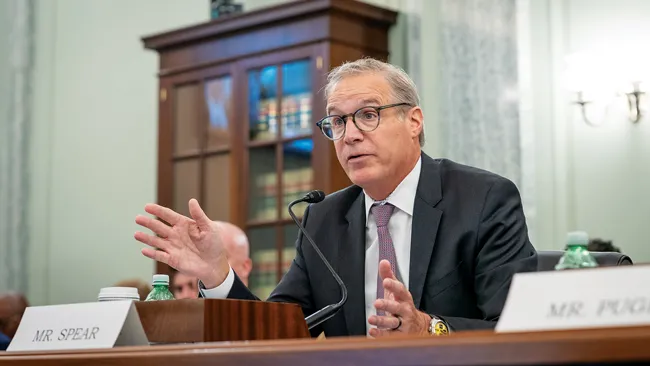Construction projects face mounting pressure to comply with environmental regulations while staying on schedule. The Environmental Protection Agency’s stormwater pollution prevention requirements can seem daunting, but with proper planning and execution, your project can meet all standards without costly delays.
Understanding these requirements early and implementing the right strategies will keep your construction timeline intact while protecting local water resources. Whether you’re managing a small residential development or a large commercial project, the key lies in proactive compliance rather than reactive scrambling.
Understanding EPA Stormwater Requirements
The Clean Water Act requires construction sites that disturb one acre or more of land to obtain coverage under the National Pollutant Discharge Elimination System (NPDES) Construction General Permit. This permit mandates specific pollution prevention measures to protect nearby waterways from sediment and other construction-related pollutants.
Construction activities generate significant amounts of loose soil, debris, and chemicals that can wash into storm drains and waterways during rain events. Without proper controls, these pollutants can harm aquatic ecosystems and violate federal water quality standards.
The EPA requires permitted sites to develop and implement a comprehensive pollution prevention plan that outlines specific measures for controlling stormwater runoff. This plan must be prepared before construction begins and updated throughout the project lifecycle.
Key Components of Compliance
Permit Application and Coverage
Submit your Notice of Intent (NOI) to the appropriate regulatory authority at least 30 days before beginning construction activities. This timeline is crucial for avoiding project delays, as you cannot legally start construction without proper permit coverage.
Include accurate project details, site maps, and contact information in your application. Incomplete or incorrect submissions will result in processing delays that can push back your construction start date.
Developing Your Prevention Plan
Create a detailed stormwater pollution prevention plan (SWPPP) that identifies potential pollution sources and describes specific control measures. For projects in Idaho, working with local environmental consultants familiar with SWPPP in Idaho requirements can streamline this process and ensure compliance with both federal and state-specific regulations.
Your plan should include site maps, construction phasing schedules, and detailed descriptions of structural and non-structural controls. Regular plan updates reflect changing site conditions and construction phases.
Installing Control Measures
Implement erosion and sediment controls before disturbing soil. Common measures include silt fences, sediment basins, construction entrances, and cover systems for stockpiled materials.
Time the installation of these controls with your construction schedule to maximize effectiveness while minimizing installation and maintenance costs. Properly installed controls protect your project investment while ensuring regulatory compliance.
Strategies for Timely Implementation
Early Planning and Coordination
Begin permit applications and plan development during the project design phase. This early start provides buffer time for addressing any regulatory comments or required plan revisions without impacting construction schedules.
Coordinate with environmental consultants, contractors, and regulatory agencies early in the planning process. Clear communication prevents misunderstandings that could lead to compliance issues or project delays.
Phased Construction Approach
Minimize soil disturbance by implementing a phased construction approach. Complete grading and stabilization in one area before moving to the next section. This strategy reduces the total area of exposed soil at any given time, lowering pollution risk and control measure requirements.
Sequence construction activities to take advantage of seasonal weather patterns. Schedule major earthwork during drier months when possible, reducing the risk of runoff events and control measure failures.
Regular Inspections and Maintenance
Conduct weekly inspections of all control measures and document their condition and effectiveness. Address maintenance needs immediately to prevent small issues from becoming major compliance problems.
Train site personnel to recognize signs of control measure failure or potential pollution sources. Quick identification and response prevent violations and avoid the costly process of addressing regulatory enforcement actions.
Avoiding Common Delays
Documentation and Record Keeping
Maintain detailed records of all inspections, maintenance activities, and plan updates. Proper documentation demonstrates good faith compliance efforts and can help resolve any regulatory questions quickly.
Use digital tools and mobile applications to streamline inspection reporting and record keeping. These tools improve accuracy while reducing administrative time.
Contractor Education and Communication
Ensure all contractors and subcontractors understand their environmental responsibilities. Regular toolbox talks and training sessions keep environmental compliance top of mind throughout the construction process.
Establish clear communication protocols for reporting environmental concerns or control measure issues. Quick communication enables rapid response to prevent violations.
Weather Monitoring and Response
Monitor weather forecasts regularly and prepare for storm events. Have emergency response procedures in place for protecting exposed areas and repairing damaged control measures quickly.
Consider seasonal weather patterns when planning major earth-moving activities. Strategic timing reduces weather-related risks and associated compliance challenges.
Building Long-Term Success
Meeting EPA requirements without delays requires a commitment to proactive environmental management throughout your project. The strategies outlined above not only ensure regulatory compliance but often result in cost savings through reduced material losses, improved site safety, and enhanced community relationships.
Successful environmental compliance becomes easier with experience and proper planning. Each project provides opportunities to refine your processes and build expertise that benefits future construction endeavors.
Start your next project with environmental compliance as a core planning element rather than an afterthought. This approach protects your schedule, reduces regulatory risk, and demonstrates your commitment to responsible construction practices.
